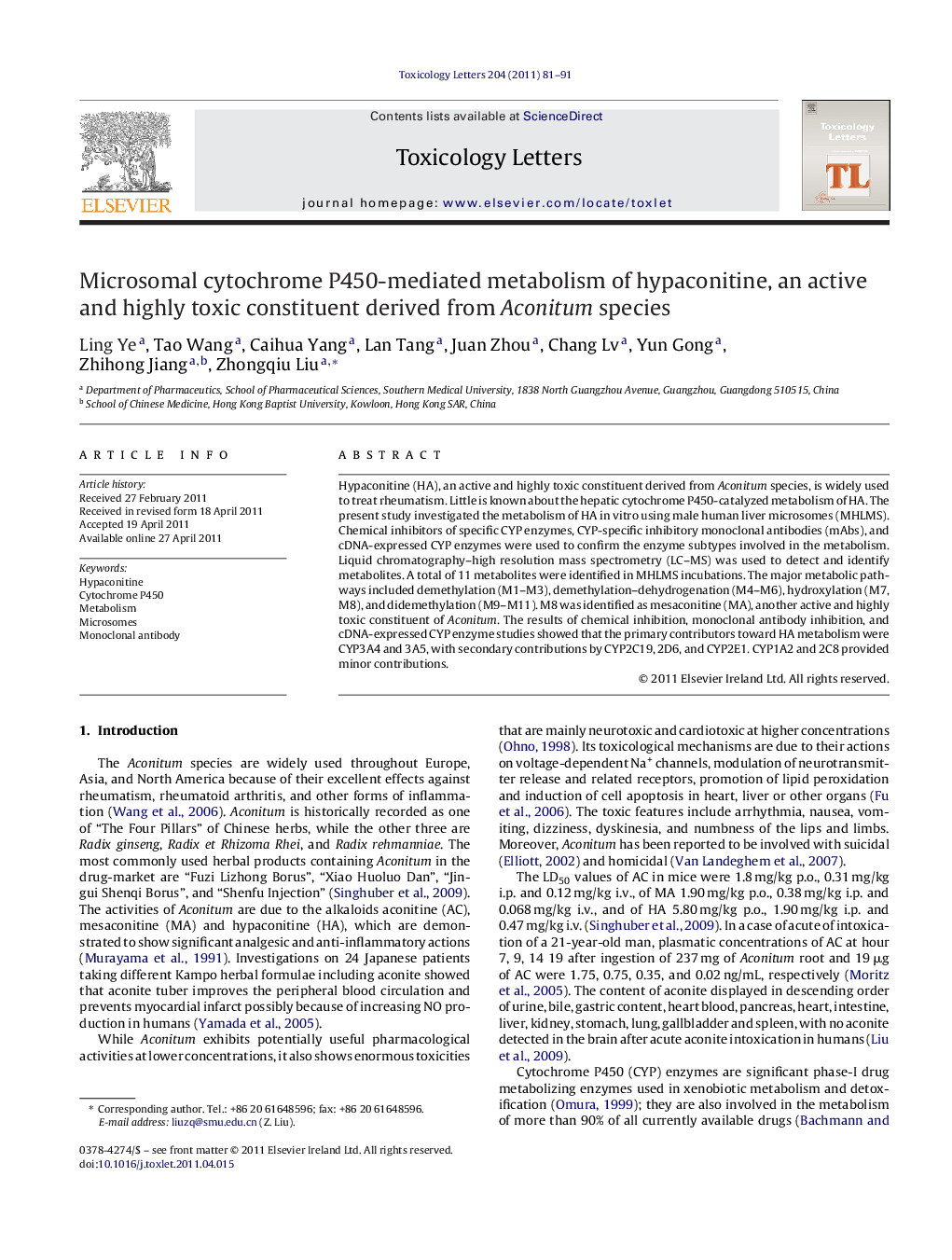| Article ID | Journal | Published Year | Pages | File Type |
|---|---|---|---|---|
| 2600435 | Toxicology Letters | 2011 | 11 Pages |
Hypaconitine (HA), an active and highly toxic constituent derived from Aconitum species, is widely used to treat rheumatism. Little is known about the hepatic cytochrome P450-catalyzed metabolism of HA. The present study investigated the metabolism of HA in vitro using male human liver microsomes (MHLMS). Chemical inhibitors of specific CYP enzymes, CYP-specific inhibitory monoclonal antibodies (mAbs), and cDNA-expressed CYP enzymes were used to confirm the enzyme subtypes involved in the metabolism. Liquid chromatography–high resolution mass spectrometry (LC–MS) was used to detect and identify metabolites. A total of 11 metabolites were identified in MHLMS incubations. The major metabolic pathways included demethylation (M1–M3), demethylation–dehydrogenation (M4–M6), hydroxylation (M7, M8), and didemethylation (M9–M11). M8 was identified as mesaconitine (MA), another active and highly toxic constituent of Aconitum. The results of chemical inhibition, monoclonal antibody inhibition, and cDNA-expressed CYP enzyme studies showed that the primary contributors toward HA metabolism were CYP3A4 and 3A5, with secondary contributions by CYP2C19, 2D6, and CYP2E1. CYP1A2 and 2C8 provided minor contributions.
► We identified a total of 11 metabolites of hypaconitine in male human liver microsomes. ► The major metabolic pathways included demethylation, demethylation–dehydrogenation, hydroxylation and didemethylation. ► The primary contributors toward HA metabolism were CYP3A4 and 3A5, with secondary contributions by CYP2C19, 2D6, and CYP2E.
